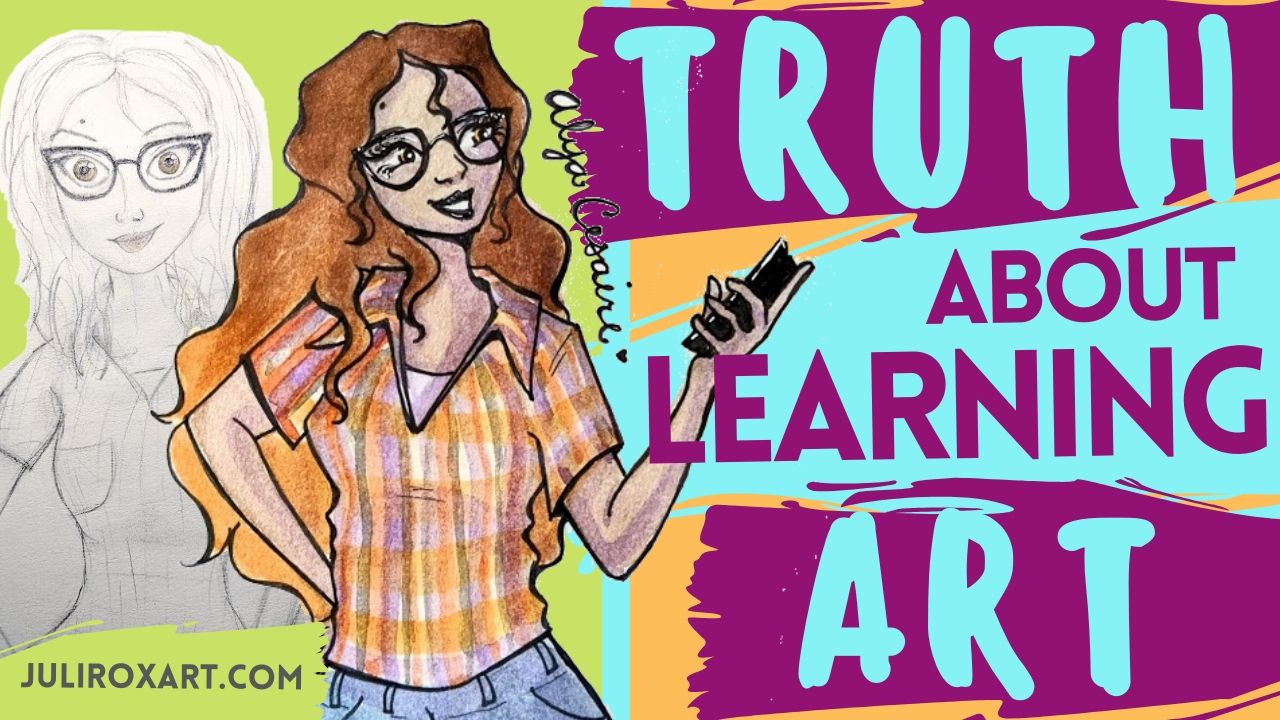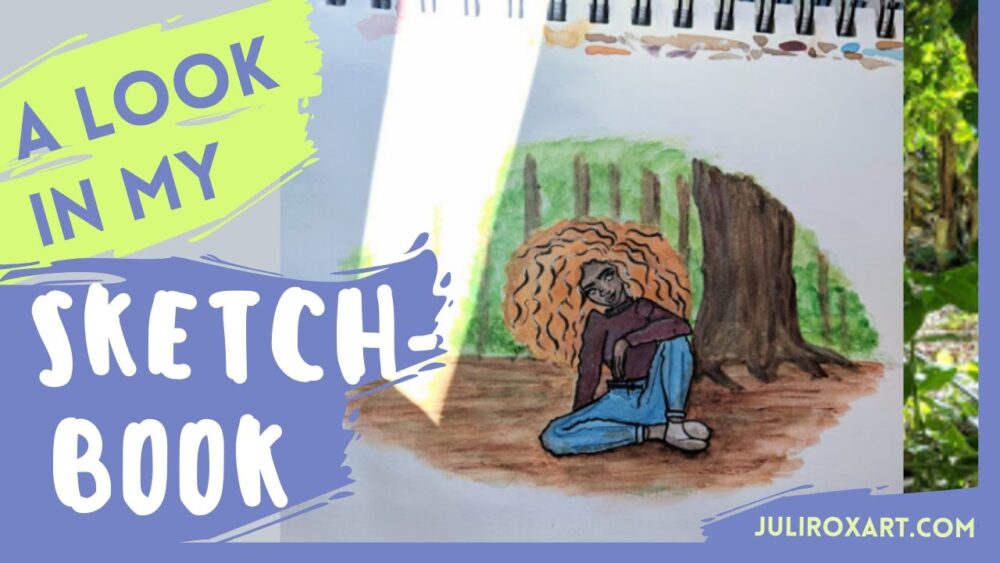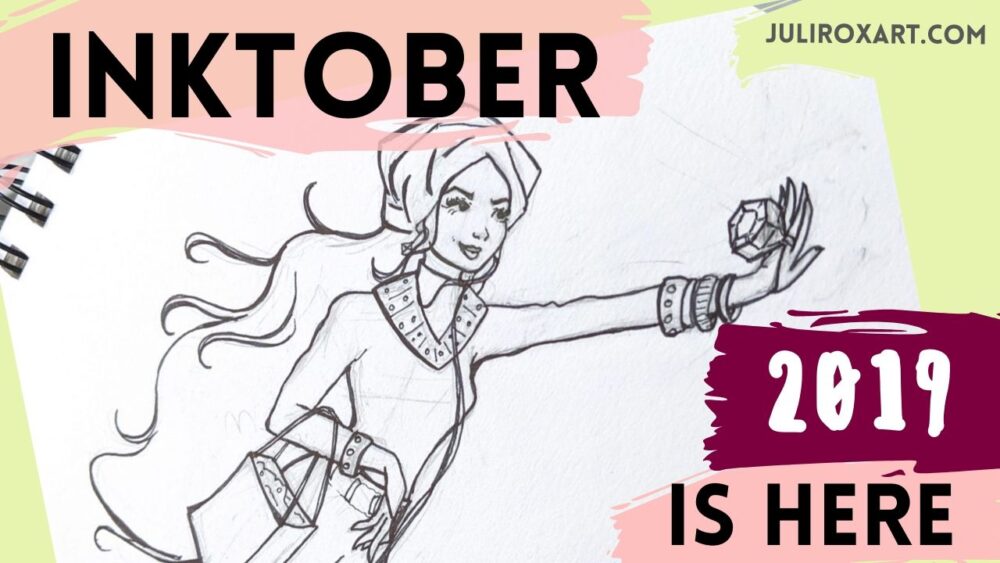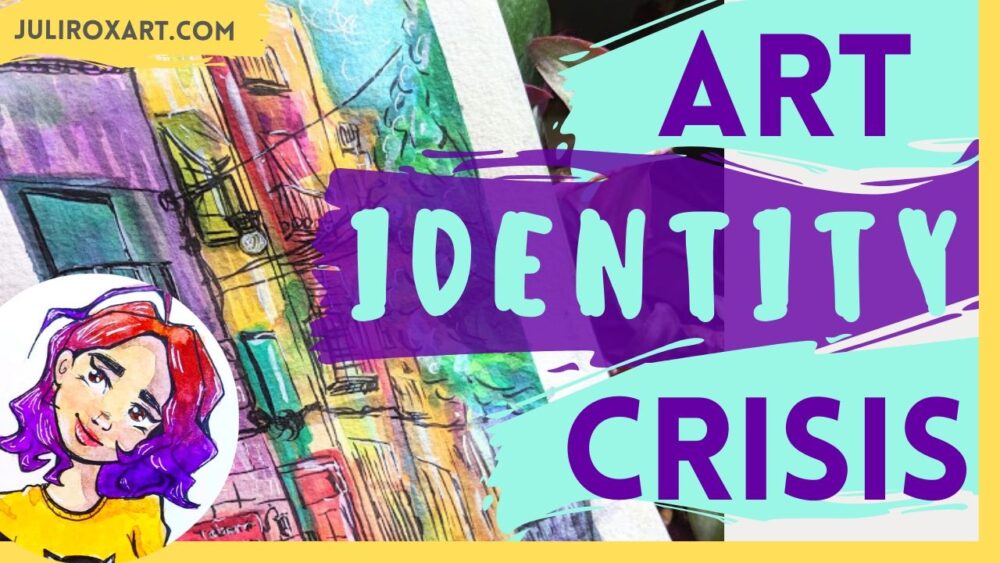Let’s be real for a second here.
What is it like to learn art as an adult?
When you ask people how long they’ve been drawing for, they typically answer with “for as long as I can remember”. And don’t get me wrong, it’s a beautiful thing to pick up on your creativity at a young age.
But it can also be discouraging to hear by someone who is just starting to learn—especially later in life.
First off, how do you improve at art?
You practice. Simple, right?
Not really. Yes, practice is a main ingredient of improving at anything; but it can be so incredibly difficult to practice and not see the fruits of your labor.
You have an image in your mind—and it can be the most simple of images—but as soon as you put pen to paper, you realize that you can’t even recreate something so basic. And this next to a 10 year old recreating a perfect rendition of Van Gogh’s Starry Night slaps yet another layer of insecurity on it all.
And no matter how many times we remind ourselves that the 10-year-old kid worked for their skill, it doesn’t help to ease this inner turmoil. People work hard for their expertise. It’s plain logical, but it begins to feel impossible to catch up with them.
You begin to doubt yourself.
And out of frustration, you put your sketchbook away for months at a time. It’s easy to lose sight of your goal during the beginning stages.
But once you have a taste of creativity, it’s difficult to turn your back entirely.
So, you pull out your sketchbook, dust it off, and start drawing again. And one day, you’ll draw something that’s half decent. It wasn’t what you imagined it to be, but your person actually looks like a person—it’s exciting.
So you keep drawing, feel like you’re on a roll, drop the ball, pick it back up. It’s a vicious cycle; however, slowly but surely, you will improve. And understanding fundamentally that you are progressing it’s one of the best feelings in the world. You’ll begin to place lines and color intuitively. Your “artists’ eye” is begins to develop. You’ll begin to feel proud of your work. You’ll appreciate imperfection. You’ll understand that erasing and redrawing and erasing and redrawing is all part of the process.
Every stroke becomes an experiment.
Every line is temporary. And if something doesn’t look right, it no longer hurts to start all over.
So yes, all you need is a bit of practice.
And a lot of determination, motivation, perseverance.
But the most important ingredient? Learning to appreciate and enjoy the process of honing in on your creativity despite the result. Loving every old and new piece of art for the lessons they’ve taught you outside of whether or not they’re undeniably bad.
Learning art as an adult is difficult because we’ve been conditioned to believe that making mistakes is a negative thing. Kids don’t feel that pressure, so they draw because it’s fun. It’s harder to be unobjectively bad at something as an adult because we fear judgment—and more significantly, we judge ourselves.
My journey began with pencil and the cheapest Walmart sketchbook I could find.
I inserted myself int the art agenda for the very reason that most 10 year olds start learning—I wanted to make fan art. Only I was 20. For about 5 months, I didn’t ink anything because I was afraid to make something permanent. It took quite a while to get over this, but eventually I did. Adding color was the next step. The year following, I worked with colored pencils because they were familiar. In year 2 I transitioned into alcohol markers so that I didn’t have to rely on my lack of ability to mix my own colors. Eventually I began experimenting with watercolor, acrylic, and gouache. Which is where I’m at now.
Now, I’ve learned to appreciate all different forms of art, and have been more inclined than ever to create original pieces.
Late last year, I also realized a noteworthy change: I began to view the world differently. I’ve begun to see the beauty in everyday scenes. That rusty old truck, vandalizing graffiti, changes in season.
I’m at the point where I can sit down and draw something and have it come out half decent. Or at least be willing to start over when it doesn’t. I still have a long way to go, but learning and growing is all part of the process—and it’s a process that I’ve found joy in.
To end off this blog post, I’d like to quote an old co-worker who was unceremoniously fired 4 months into his role:
When starting something new, you’re going to be bad up until a certain point. It’s those that manage to pass the first roadblock of self-doubt—and do so with a smile—who end up succeeding. So many people quit before they see the slightest improvement; but if you can still enjoy the process of learning something you’re not yet good at, then you know that you’ve already made it.
So yes, you need to practice to improve at your art—whatever it may be. But it’s not that black and white. You will feel discouraged at some points. You will go through swings of frustration and self-doubt. But if you stick with it, you will get better, bit by bit.




